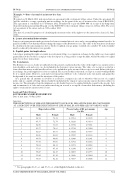Page 519 - SAIT Compendium 2016 Volume2
P. 519
IN 58 (2) Income Tax acT: InTeRPReTaTIon noTes IN 58 (2)
Example 3—Date of accrual of an interest-free loan
Facts:
B retired on 30 March 2012 and entered into an agreement with a retirement village owner. Under the agreement, B will be entitled to occupy a particular unit in exchange for the grant of the use of an interest-free loan of R400 000. The agreement is concluded on 15 February 2012. B undertook to pay the R400 000 on receipt of his lump sum bene t from his pension fund. He paid over the R400 000 to the retirement village owner on 12 June 2012. The year of assessment of the owner ends on 31 December 2012.
Result:
The date of accrual for purposes of calculating the monetary value of the right to use the interest-free loan is 12 June 2012.
8. Loans at nominal interest rates
Some recent arrangements make provision for loans at nominal interest rates and a corresponding nominal rental to be paid. It is SARS’s view that this will not change the impact of the Brummeria case. The value of the bene t received must be calculated in the same manner as above, but the weighted-average prime overdraft rate (symbol ‘D’ in the formula) must be reduced by the interest rate payable.
9. Capital gains tax implications
A developer granting life rights over units in a retirement village to occupiers in exchange for the right to use loan capital granted interest-free by those occupiers to the developer for as long as they occupy the units, will not be subject to capital gains tax on these transactions.*
10. Conclusion
The Brummeria case is clearly not authority for the general conclusion that the value of the right to use an interest-free loan should in each and every case be included in the borrower’s gross income. The value of a receipt or accrual in a form other than money would usually not have to be included in gross income if the receipt or accrual did not take place in exchange for goods supplied or services rendered. The reason for this is that such a receipt or accrual would probably be of a capital nature. However, each and every transaction will have to be evaluated on its own merits and against the background of its own facts and the intentions of the parties.
As a general rule all amounts received by or accrued to a taxpayer (in cash or otherwise) that are not of a capital nature and are capable of being valued, should be included in the taxpayer’s gross income and are therefore subject to income tax. The principles from the judgment (see 4) should, however, be applied with due regard to the speci c facts and circumstances of each and every matter involving an accrual or receipt in a form other than money (including the right to retain and use an interest-free loan).
Legal and Policy Division
SOUTH AFRICAN REVENUE SERVICE Date of rst issue: 30 June 2010
Annexure
THE EXPECTATION OF LIFE AND THE PRESENT VALUE OF R1 PER ANNUM FOR LIFE CAPITALISED
AT 12 PER CENT OVER THE EXPECTATION OF LIFE OF MALES AND FEMALES OF VARIOUS AGES
Age
Expectation of life
Present value of R1 per annum for life
Age
Male
Female
Male
Female
0
64,74
72,36
8,32791
8,33105
0
1
65,37
72,74
8,32828
8,33114
1
2
64,50
71,87
8,32776
8,33091
2
3
63,57
70,93
8,32714
8,33064
3
4
62,63
69,97
8,32644
8,33033
4
5
61,69
69,02
8,32567
8,32999
5
6
60,74
68,06
8,32480
8,32961
6
7
59,78
67,09
8,32381
8,32918
7
8
58,81
66,11
8,32271
8,32869
8
9
57,83
65,14
8,32146
8,32815
9
10
56,85
64,15
8,32007
8,32753
10
11
55,86
63,16
8,31849
8,32684
11
12
54,87
62,18
8,31673
8,32608
12
* See paragraphs 20 (3) (a) and 35 (3) (a) of the Eighth Schedule to the Act.
saIT comPendIum oF Tax LegIsLaTIon VoLume 2 511


